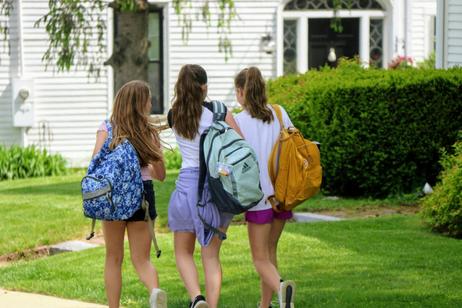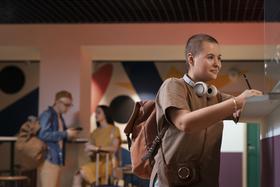Free Boarding Schools (Updated 2025)
Many families hope for a boarding school experience but are daunted by the cost. In 2025, a few institutions offer truly free boarding, and others make it nearly free via generous financial aid or income-based tuition caps. This article examines current free boarding school options, eligibility, policy changes, and what you should know when exploring them.
What “Free Boarding School” Really Means in 2025
A truly free boarding school means no tuition, room, or board costs for students (or minimal fees, depending on family circumstances). In many cases, free boarding schools are public charter or state schools, or private institutions with endowments or philanthropic support that allow them to waive full costs.
Other schools may not be entirely free but offer tuition-free or sliding scale models where the cost is capped based on family income. For many families, this makes the difference between boarding school being impossible and being a realistic option.
Examples of Free Boarding Schools (US & International)
Here are some noteworthy examples of free boarding schools in 2025:
| School | What It Offers | Admissions / Eligibility Highlights |
|---|---|---|
| SEED School of Maryland | A tuition-free college-preparatory boarding school for incoming 6th and 9th graders; students live on campus throughout the week. | Admission via public lottery; statewide eligibility; no tuition for any student. |
| SEED Public Charter School of Washington, D.C. | Nation's first tuition-free boarding program for students, offering a five-day boarding environment. | Application open to district students; structured program, high expectations; families should check logistics. s |
How Many Truly Free Boarding Schools Are There?
There remain very few boarding schools in the U.S. that are fully free. Most are highly competitive or public charter/state supported. Boarding School Review
A number of schools offer generous financial aid or free tuition for certain income brackets. For example, Deerfield Academy now offers free attendance for U.S. students from families earning under $150,000 annually, and caps tuition at 10% of income for those under $500,000. Wikipedia
Policy & Trends in 2025
Recent years have seen growth in policies and programs that expand free or near-free boarding school access:
State-based public boarding schools / charter boarding schools are uncommon but growing. SEED MD and SEED DC are among the few such models.
Sliding-scale / income capped tuition is increasingly adopted by elite boarding schools. The Deerfield model is one of the most visible examples. Wikipedia
There is more transparency around eligibility, cost of attendance, and aid packages in published materials and school websites.
Real-World Data & Costs
To understand what “free” really buys you—and what other schools charge—here are some comparisons:
Deerfield Academy (2024-25): Boarders normally pay ~$74,440; day students ~$53,860. ~40% of students receive financial aid; the average grant for boarding students is ~$60,850. Under the new policy, families under $150,000 income attend for free; those under $500,000 pay no more than 10% of income. Wikipedia
Schools with “least expensive tuition” in 2025-26 in private/boarding categories often still have costs of tens of thousands of dollars unless you qualify for aid. (BoardingSchoolReview’s ranking of least expensive tuition boarding schools helps identify lower-cost options. ) Boarding School Review
Who Is Eligible & What Families Should Ask
Eligibility for free or near-free boarding depends on several factors. Here’s what to consider or ask when exploring options:
Income thresholds and family assets. Schools often require income documentation. Some policies (like Deerfield’s) include caps and sliding scales.
Residency & lottery systems. Many public free boarding schools use lottery-based admissions; your location/state may matter.
Academic expectations. Even in free boarding schools, students must often maintain strong academic standing, behavior, participation.
Additional costs. Even “free” boarding may still entail uniforms, transportation, books, or fees. Ask what’s covered.
Support services. Check for counseling, dorm supervision, health services, etc., especially for younger students or those far from family.
Expert Insights
“What families often don’t realize is that ‘free boarding’ isn’t always zero cost. But with transparent policies, sliding-scale tuition caps, and public boarding models, the gap is narrowing in 2025.”
— Admissions Director at a public boarding school
“Schools like SEED are models for equity: they show that boarding school can be a tool for opportunity, not privilege, when public resources are committed.”
— Education policy researcher specializing in underserved communities
Myths & Clarifications (Overlap with Boarding School Myths)
Some myths overlap here—especially that free boarding schools are too few to matter, or that “free” means “low quality.” In fact:
Free boarding schools are rare but exist, and many schools offering free or nearly free boarding maintain high academic standards.
Not all schools offering free tuition are run without charge—they may be public charter schools or state programs. The quality can vary, so don’t assume “free” means “inferior.”
You can read more on common misconceptions in Boarding School Myths Debunked to see how myths about cost, access, and quality have changed.
Where Free Boarding School Options Are Expanding
Some governments and regions are also adopting free boarding school models more broadly:
Recent reports indicate that certain countries are rolling out free boarding schools for low-income families, including the provision of meals, lodging, and full day academic programs. Asia Pacific Solidarity Internationally, the evidence for boarding schools helping underserved students (both academically and in well-being) is growing, though results are mixed depending on initial conditions. (A study in France’s internats d’excellence found large gains in math scores among disadvantaged students after two years, though with some early adjustment challenges.) J-PAL
Pros & Trade-Offs
| Pros | Considerations / Challenges |
|---|---|
| Opportunity for students from lower-income backgrounds to access boarding school benefits. | Limited number of spots; very competitive admissions. |
| Strong support and structure in fully residential environments. | Even “free” programs may have hidden or extra costs (travel, uniforms, fees). |
| Potential for high college matriculation and outcomes. | Geographic distance from home; emotional adjustment. |
| Schools increasingly transparent about cost and aid. | “Free” often only for certain grades or entry points; may exclude some costs. |
Final Thoughts: Is Free Boarding School Right for Your Family?
Free boarding school options are rare—but 2025 shows momentum. With new policies, expanded public boarding models, and elite institutions now offering free tuition for middle-income families, the barrier is lower than it has been in decades.
If you’re considering free or nearly free boarding school:
Start by researching public or charter boarding schools in your state or country.
Review income eligibility, what “free” covers, and what it doesn’t.
Visit or talk with current students/families in free boarding or near-free programs.
Compare with lower-cost boarding schools (see least expensive tuition lists) to understand trade-offs.
A boarding school education can be more accessible than you expect—if you know where to look and ask the right questions.













